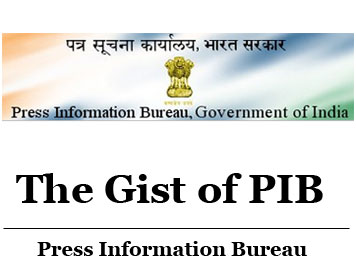On Assisted Reproductive Technology
Regulation Bill (The Hindu)
Mains Paper 2: Polity
Prelims level: Assisted Reproductive Technology Regulation Bill
Mains level: Significance of the Assisted Reproductive Technology Regulation
Bill
Context:
- The Assisted Reproductive Technology Regulation (ART) Bill, which was
cleared by the Union Cabinet this week, came after the Surrogacy Bill that
it should have preceded.
Background:
- Together, the ART Bill; the Surrogacy Bill; the amendment to the Medical
Termination of Pregnancy Act; and the older Pre-Conception and Pre-Natal
Diagnostic Techniques Act present a bouquet of legislation that will have a
positive impact on the reproductive rights and choices of women in India.
- The ART Bill to regulate clinics offering fertility treatments has been
long in the works, and was first presented publicly way back in 2008.
- ART measures help couples unable to conceive naturally to bear children
with the aid of state-of-the-art technology to achieve pregnancy, leading to
safe delivery.
History of the Assisted Reproductive Technology:
- India has a rich history of employing ART, though the initial years went
officially undocumented at that time. In the late 1970s, only months after
the birth of Louise Brown, the first ‘test tube baby’, Kolkata-based doctor
Subhas Mukherjee announced the birth of the world’s second test tube baby.
- Subsequently, the industry saw phenomenal growth, as infertility rates
went up.
Why regulation is important?
- A market projection (by Fortune Business Insights) said the size of the
ART market is expected to reach $45 billion by 2026. Among Asian countries,
India’s ART market is pegged at third position.
- A lack of regulation and the consequent laxity in operations drove a lot
of traffic from other nations to India.
- This, in turn, along with the relatively low costs, led to the
mushrooming of ART clinics across the country. Undoubtedly, this also led to
a plethora of legal, social and ethical issues.
Way ahead:
- It is at this juncture that the ART Bill has seen a fitting revival,
egged on by legislators who facilitated the passage of the Surrogacy Bill in
the Rajya Sabha.
- It seeks to regulate and monitor ART procedures, and mandates the
establishment of a National Board and State Boards to lay down rules for
implementation, and also honours a long-pending demand — creation of a
national registry, and registration authority.
- While the rules will handle the bells and whistles, the Bill already
sets a comprehensive framework to operate on.
- Most significantly, the Bill recommends punishment, even jail time, for
violations of the provisions.
Conclusion:
- Since it does impinge on surrogacy too, the government must now work on
ensuring synchrony in both Bills.
- Having come this far to ensure the reproductive rights of women, the
state now has the thriving ART industry on a leash, and the Bill is its best
chance to eliminate exploitation in the field.



